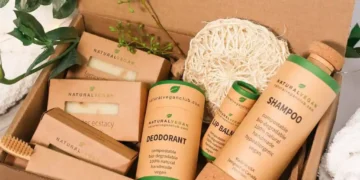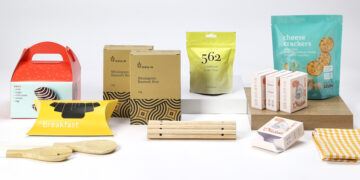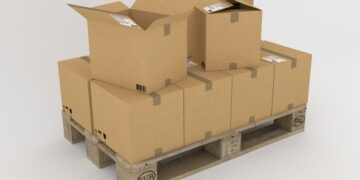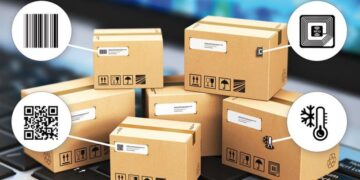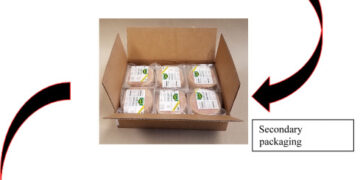Consumers worldwide do a lot of shopping. And with that comes a lot of plastic packaging and associated costs. But it doesn’t have to be like this. A lot of consumers are switching to single-use, throwaway plastic packaging which is costly for retailers and producers alike.
Packaging drives up costs by adding materials, transportation expenses, waste disposal fees, and more. If we can reduce the amount of unnecessary packaging in our shopping lives, everyone wins. That’s why retailers must rethink their approach to packaging if they want to continue to compete with other retailers at a lower cost.
To keep costs low and offer the best service to shoppers, businesses must rethink their packaging practices and invest in intelligent packaging solutions that can make their operations more efficient without reducing the quality of their products or service offerings. Let us take a look at how you can reduce costs while offering better customer service by rethinking your packaging practices from top to bottom

Shipping and Delivery
Shipping and delivery may be one of the most critical parts of the grocery shopping journey, but it’s an area that many grocers fail to properly optimize. If a retailer can optimize its shipping costs, it can reduce its overall expenses by up to 25%. And it can achieve these savings without compromising the quality of its products. To optimize your shipping costs, you first have to analyze your operations.
What are the largest costs in your operation? Where are they located? What can you eliminate to reduce those costs? Once you’ve identified your best area for cost reduction, you can apply the same techniques used by shipping companies to reduce your costs even further. This includes analyzing your current operations, identifying the best areas for cost reduction, and implementing a lean infrastructure to reduce your costs even further.
Takeaway Boxes
Takeaway and delivery stores often use plastic takeaway boxes that can be costly to your bottom line. If you offer a takeaway and delivery service, it’s important to keep an eye on your costs. Some boxes are more expensive to use than others. You can find out which ones are the most expensive by putting them through the wringer.
A broken box is a costly box because it’s a sign that you broke something in the process of using and disposing of the box. In some cases, this costs your business more than using a more expensive box. If you’re delivering to a customer’s home, you may also be wasting time and fuel trying to collect the broken box. That time could be spent delivering other orders.
If you offer a takeaway service, you also have to keep an eye on your delivery charges. Sometimes delivery charges can be a hidden cost in the cost of doing business. Make sure you know what your delivery charges are and that they’re reasonable. You can also offer home delivery for an additional cost. If you offer home delivery, you may be spending money on delivery routes and fuel, which could be saved.

Packaging for dry foods
Many retailers adopt costly shelf-life packaging for dry foods. But there are many different types of packaging for dry foods that are suitable for short-term storage and shelf life and don’t incur any additional costs. This can include paperboard packaging, plastic film, or a paper bag. If you’re using plastic film or bag-packing materials on dry foods, consider switching to paperboard packaging, which doesn’t incur any additional costs.
Be careful not to confuse paperboard packaging with paperboard boxes, which are often used for wet foods. These boxes may incur extra costs and shouldn’t be used for dry foods. Dry foods often don’t require wet protection, and paperboard boxes don’t offer the best barrier against wetness. An alternative is to use a cardboard box lined with plastic. This can be more cost-effective than using wet polypropylene or polyethene packaging.
Wet foods and beverages
Retailers often incur significant costs when it comes to the packaging of wet foods and beverages. Some packaging may be more environmentally friendly, but it comes at a cost. You can find out which types of packaging are the most expensive when you put them through the wringer. This will help you identify which types of packaging are most suitable for your products. You can also find out which types of packaging are the least expensive by running a survey of your customers.
Consumers often have strong feelings about the packaging of wet foods, beverages, and other products they purchase. If you ask your customers how they feel about certain types of packaging, you can find out which types of packaging are the least expensive. If you offer delivery or takeout service, you can also optimize your costs by using a reusable container for delivering meals. This can be more cost-effective than using Styrofoam packaging.
From Store to Customer
Retailers incur significant costs during the delivery of refrigerated and frozen foods. You can reduce these costs by using reusable containers for delivering meals. This can be more cost-effective than using Styrofoam packaging. You can also offer home delivery for an additional cost.
Retailers also incur significant costs during the delivery of hot foods. If you offer delivery service, you can reduce these costs by using a reusable container for delivering meals. This can be more cost-effective than using Styrofoam packaging. You can also optimize your delivery costs by using a curbside delivery service, scheduling deliveries during off-peak hours, and using a fleet of vehicles with a low carbon footprint.

Business To Consumer (B2C) Packaging
Packaging materials and the associated costs can add up quickly when you’re only dealing with single-use packaging materials. That’s why it’s critical to use more sustainable packaging for wet foods, dry foods, and beverages. This can help reduce packaging costs and offer your customers a more eco-friendly shopping experience.
You can also find out which types of packaging are the least expensive by running a survey of your customers. Consumers often have strong feelings about the packaging of wet foods, beverages, and other products they purchase. If you ask your customers how they feel about certain types of packaging, you can find out which types of packaging are the least expensive.
If you offer delivery and/or home delivery, you can also optimize your costs by using a reusable container for delivering meals. This can be more cost-effective than using Styrofoam packaging. If you offer online ordering and delivery, you can also offer a may day celebrations bag drop service, which can be more cost-effective than using paper bags.
Bags and Wrapping Materials
Bags and wrapping materials can contribute significantly to the cost of a grocery shopping trip. These materials are often more expensive than the products they’re protecting, so it’s important to use them sparingly. If you offer delivery or home delivery, you can also optimize your costs by using a reusable container for delivering meals. This can be more cost-effective than using Styrofoam packaging.
If you offer online ordering and delivery, you can also offer a may day celebrations bag drop service, which can be more cost-effective than using paper bags. You can also reduce the cost of bags and wrapping materials by using newspaper or recycled paper for wrapping. This can be more cost-effective than using plastic bags, and it can help you reduce the amount of plastic entering the landfill.
The Bottom Line
Many of the costs associated with packaging and handling are related to the operation and maintenance of a given piece of equipment. When you look at the big picture, these costs often makeup only a small part of the operational budget and can be easily recovered through efficiency gains. And while it may be tempting to cut these costs to save a buck or two, doing so may impact the quality of your products and services.
When you don’t reevaluate the purpose and function of your packaging, you can inadvertently impact the quality of your products. In some cases, this means using less durable materials in your packaging. It may also mean using less environmentally friendly packaging materials. This can negatively impact the quality of your products, and it can also impact your bottom line.

